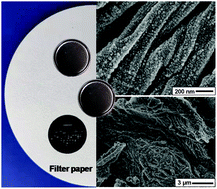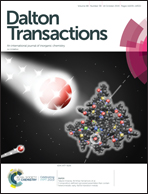Hierarchical nanostructures derived from cellulose for lithium-ion batteries
Abstract
Introducing the sophisticated morphologies and structures of natural substances into artificial materials provides a promising strategy for the fabrication of functional materials with tailored structures and functionalities. Herein, our recent advances achieved in the fabrication of hierarchically structured functional materials derived from natural cellulose substances (e.g., ordinary laboratory filter paper) for lithium-ion batteries are reviewed. The surface sol–gel process was employed to fabricate metal oxides (Sn, Ti, Fe, etc.), silica and silicon based nanocomposites by using the corresponding metal alkoxides as the precursors, which faithfully inherited the unique porous network structures of the initial cellulose substances. However, the nanomaterials synthesized as such are limited to the above-mentioned species due to the limitation of specific metal alkoxide precursors used. To break this limitation, specific polyoxometalate clusters were employed as the building blocks to be assembled onto the surfaces of cellulose nanofibres and eventually to obtain the corresponding molybdenum based nanomaterials with three-dimensional porous network structures and specific properties. These cellulose derived nanocomposites exhibit improved lithium storage capacities and cycling stabilities when applied as anodic materials for lithium-ion batteries, resulting from the unique hierarchically porous network structures inherited from the initial cellulose substance and the strong synergistic interactions among the components contained therein.

- This article is part of the themed collection: 2019 Frontier and Perspective articles


 Please wait while we load your content...
Please wait while we load your content...